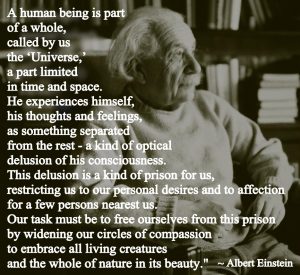 In my day to day working with people, conditions of anxiety, stress and depression seem to be on the increase. Modern day demands of work pressure, financial commitments and even our technology that keeps us indoors, separating us from nature and from a true sense of community interaction, may all be contributing factors.
In my day to day working with people, conditions of anxiety, stress and depression seem to be on the increase. Modern day demands of work pressure, financial commitments and even our technology that keeps us indoors, separating us from nature and from a true sense of community interaction, may all be contributing factors.
Do we recognise and acknowledge our feelings, at least to ourselves? Pushing ourselves further and suppressing our feelings will just cause emotions to linger and grow stronger. Eventually unhealed emotions impact on our physical health. Once again, Mental Health is being featured as a BBC News focus item. This eye-opening BBC News article: Mental health and stigma: ‘You’re not alone’, tells the stories of many people experiencing mental and emotional issues who are now starting to talk about it.
So what can you do yourself and how can you attend to your emotions in a healthy way?
7 Steps to Mental and Emotional Health
Step 1: Accept it
Accept what you feel as real. Your feelings are more real than your thoughts. They rise from a place of your authentic self. Stop fighting your feelings with thoughts like ‘I shouldn’t feel like this’. You are human after all so tune into your feelings. The knowing and accepting of the feeling is the seed of healing.
Step 2: Own it
Stop the blame and take responsibility for your own feelings. Your emotions are your own. Change thoughts of: ‘He made me angry’ or ‘she upset me’ to ‘I’m angry because…’ Or ‘ I feel upset because…’. Question your own reaction. This empowers you to make changes.
Step 3: Face it
Give yourself permission to feel your feelings. Avoiding your feelings means you are ignoring a call from your deeper unconscious. This can result in suppressed emotions which in turn create anxiety and discomfort and eventually disease in the body. There is a researched link between suppressed emotions and cancer. There is also a link between anger and high blood pressure and between heart disease and hostility or cynicism.
Step 4: Say it
Express your emotions, if not to others, at least to yourself. From a therapeutic perspective, emotions aren’t a problem unless they are unresolved, accumulated or suppressed. The word emotion implies fluidity and movement. Emotions need to flow through and expression is a good way to do it. Saying how you feel can educate those around you and they can get to know you better.
Step 5: Sit with it
Emotions can also be healed the mindful way. In a mindfulness meditation we just sit with the feeling. Sitting with it is exactly what we tend to avoid. Yet sitting with your feelings mindfully is easier than we think. By staying mindful of our feelings we are starting to let go of our habitual reactions to them. Mindfulness makes us aware that all things come to pass and soon transform into new wisdom and personal growth.
Step 6: Learn from it
As with pain in the body, our emotions are actually messages from the unconscious mind. These aren’t always immediately obvious. Anger for example, can mean that someone may have overstepped a line and that it may be time to re-assert your boundaries. Anger in its healthy form is assertiveness. Anxiety tells us that the mind is focused on feared outcomes – energising what you DON’T want. The key is to focus the mind on desired outcomes – energising what you DO want. Sadness and depression can be the result of unexpressed anger, now turned inward. If this continues over a prolonged period, it can impact on the body physically. Reflection brings clarity and changes behaviour.
Ultimately, your emotions serve as a gateway to your intuitive self and by befriending your emotions, honouring and valuing them, you can access your own inner wisdom. The more you attend to your emotions as subtle messages, the stronger your intuitive ability grows. This allows you to be more in touch with your inner guidance and that is a priceless gift.
Step 7: Let it go
When you have reflected and learned from your experiences and feelings, it’s time to let go. Set the intention to let it go. There is power in the words: “I release…(e.g. this anger)…”. Releasing brings relief and makes space for joy to return. Let go of the need to control too. A major source of suffering is wanting things ‘my way’. Everything happens for our own learning and growth. We can’t always see it when we’re in it. Soon you’ll see how you have grown through it. When the murky waters of the unconscious mind clears, wisdom shines through.
Let go of the importance of others people’s opinions too. They are just opinions, not truths. When you attach too much value to their opinions you are giving your power away. Liberate yourself from others opinions and give yourself the permission to just be your true self. That brings happiness.
“Be yourself; everyone else is already taken.” Oscar Wilde
Resources:
For the mindful approach to healing and releasing emotions, you can listen to our guided meditation: Healing Emotions the Mindful Way. Follow this link to our Products: Transformational Meditations page.
Sometimes we need a little assistance to heal and release emotions of the past. In my experience Time Line Therapy™ is unique in its approach to emotional healing and resolves issues remarkably fast without having to go into a lot of details. Time Line Therapy™ is equally effective in overcoming limiting beliefs and building empowering beliefs and confidence. For more information click on this link: Time Line Therapy™.
The book “Lifting the Veils of Illusion”, describes the path of personal transformation in 7 Key Steps. Essentially a the path is a healing journey, this book is an informative, interactive guide which includes healing meditations so you can navigate the path of self-healing and transformation in your own comfortable way.
Want to go through a step by step guided process of healing and creating your future? Join one of our personally transformational events. Visit our Events Calendar for forthcoming Events.
The mail box is always open. To contact us click Contact Us

